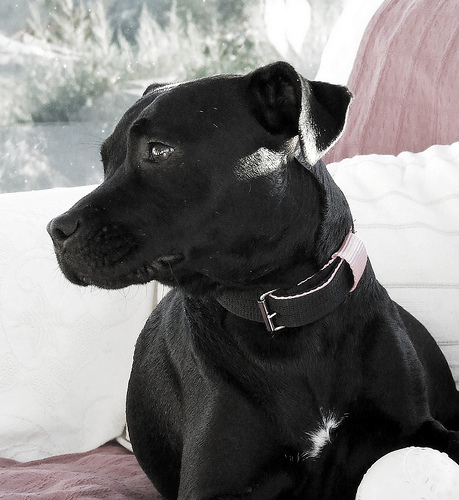
“Spanning.” It helps evaluate whether a working terrier is able to do its job. Can it follow quarry through small tunnels, or even get into the tunnel? If the dog’s chest is too big, chances are good that the answer is “no,” and in that case, the dog is unsuited to do the job for which its breed was developed.
Border Terriers, Jack Russell Terriers, and Parson Russell Terriers are not the only breeds that are spanned. The Patterdale Terrier is also “hand spanned.” Furthermore, the dog’s back is also evaluated because if it’s too short, the dog may not be flexible enough to move around underground.
Working is this breed’s stock in trade. Bred out of the old working fell terrier (a term that some old school traditionalists still use), the Patterdale was originally bred to run with the Lakeland fell packs, and worked in the Lakes Region of Northern England for hundreds of years where it controlled vermin, and squeezed into rocky crevices to lure a fox out once it went to ground by yapping at it, then slowly backing up until the fox was ready to bolt. This feisty tenacity resulted in the breed being known as the Elite of Working Terriers. Indeed, Patterdale owners are fond of saying that there are terriers, and then there are Patterdales.
Figuratively speaking, other terriers may consider this moniker to be “fighting words,” but it can’t be helped. Enthusiastic self-starters, the Patterdale’s DNA was inherited from terriers who didn’t have a “cushy’ job” of digging in soft dirt found in the south of England. They were northern Englanders, and as such, had to work in earth that was too rocky to dig, namely borrans, rock tip, mines, and scree. This took a “tough as nails” dog and helps explain how a 13 pound American Patterdale Terrier named “Rocky,” took on a 34-pound badger – and won.
The Patterdale Terrier is recognized by several registries including the United Kennel Club, but not the AKC.
Image: Patterdale Terrier photo credit: danciminera 33/365 – last boxxy pic i promise :p via photopin (license)
